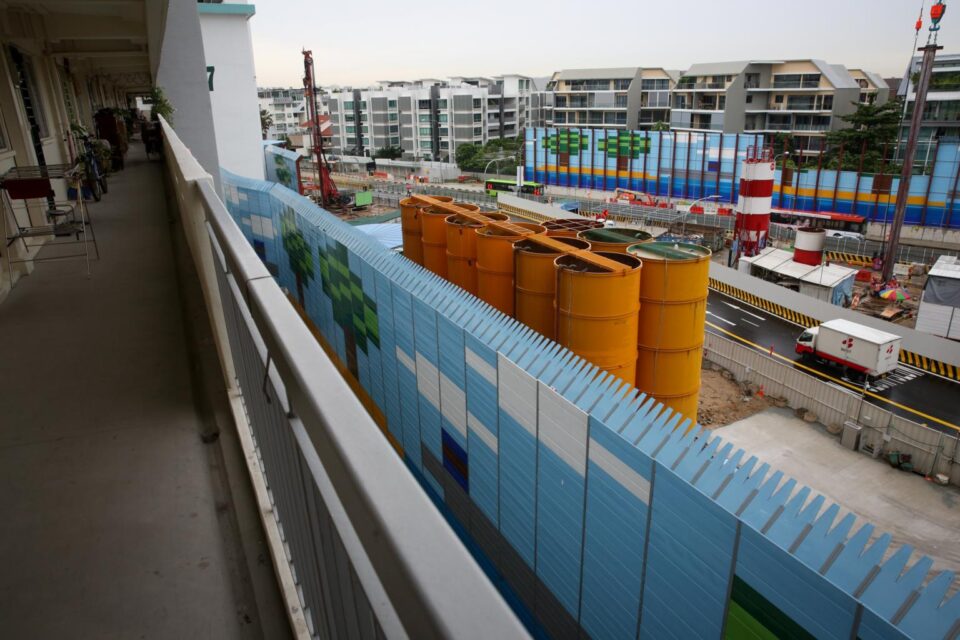Step outside in any busy part of Singapore, and you’re likely to hear the constant hum of city life — from cars and buses to construction and MRT trains. It’s the soundtrack of a bustling urban hub. But as the city continues to grow upward and outward, one question keeps coming up: Are outdoor sound barriers in Singapore really keeping up? Or is the noise slowly creeping into our homes, schools, and workspaces?
Why Noise Barriers Exist in the First Place
Sound barriers — whether they’re made of concrete, acrylic panels, metal, or green walls — are meant to do one thing: block or reduce sound from reaching sensitive areas like residential neighbourhoods, schools, hospitals, and offices.
In Singapore, you’ll find noise control barriers commonly along expressways, construction sites, and train lines. The idea is to give nearby residents some quiet — or at least reduce the “whoosh” of traffic to a manageable level.
The Urban Soundscape Is Changing
Singapore isn’t the same city it was 10 or 15 years ago. Today, there are:
- More high-rise buildings — meaning more people living closer to elevated train tracks or roads.
- More 24/7 activity — with deliveries, construction, and transport running well into the night.
- More infrastructure upgrades — including rail expansion, housing developments, and mega-projects like the North-South Corridor.
All of this means more sources of noise, often operating at the same time and closer to where people live. This has raised the stakes for noise control, and people are starting to notice.
So, Are Current Barriers Doing Enough?
The answer? It depends.
Some newer noise barriers, especially those along major expressways and MRT viaducts, do a decent job. The Land Transport Authority (LTA) has even installed transparent noise barriers to maintain both aesthetics and function. In areas like Bishan and Serangoon, residents living near MRT lines have noticed a clear reduction in noise levels after barriers were installed.
But here’s the issue:
Not all areas are covered. And in some places, the barriers don’t quite match the level of noise being generated today.
For example, if your flat faces an elevated expressway and you live on the 10th floor, a 3-metre barrier at road level may not do much for you. Similarly, if construction noise is bouncing off surrounding buildings, a basic sound barrier might not be enough to absorb or redirect the sound effectively.
What About Construction Sites?
Singapore’s construction boom has been both a blessing and a headache. While new homes and MRT stations are exciting, nearby residents often suffer through months or even years of noise.
Construction sites are required to use temporary noise barriers, especially when they’re close to residential zones. However, the quality and coverage can vary. Some sites use high-performance acoustic barriers, while others may rely on basic fencing that doesn’t really reduce much sound.
And yes, there are regulations — the National Environment Agency (NEA) sets limits on permissible noise levels at different times of the day. But enforcing those limits consistently can be tricky, especially when projects run late or involve noisy equipment.
Are There Better Options?
Actually, yes.
Today, there are new types of noise barriers that are more efficient and aesthetically pleasing:
- Green noise barriers that combine plants with acoustic material, adding both beauty and function.
- Modular acoustic barriers that are faster to install and more adaptable to different site needs.
- High-rise noise shields designed specifically to protect residents above the typical ground-level zone.
But these newer solutions tend to be more expensive, and implementation is still catching up to demand. As of now, traditional solid barriers are still the most common choice, even if they aren’t always the most effective.
What Do Residents Think?
Ask around, and you’ll find mixed opinions. Some residents are grateful for the added quiet. Others feel that barriers are too low, don’t cover enough, or only work in theory, not in real life.
There’s also the issue of transparency and consultation — residents are not always informed ahead of time about whether barriers will be installed near them, or what kind. This lack of communication can lead to frustration, especially when the noise levels remain high despite ongoing construction or transport upgrades.
So… What’s the Way Forward?
Urban noise isn’t going away — if anything, it’s only going to get worse as the city grows. So the real question is how Singapore can evolve its approach to noise control.
Here are a few ideas being floated by experts and architects:
- Smarter barrier placement based on acoustic modelling (not just putting up a wall and hoping for the best)
- More use of green barriers to blend into residential neighbourhoods
- Incentives for contractors to use premium temporary sound barriers
- Stricter noise enforcement, especially in residential zones during off-hours
But perhaps the biggest shift needed is this: treating noise pollution as seriously as other urban issues like air quality, safety, or public transport. It might not be as visible, but it has real effects on mental health, sleep, and overall well-being.
Final Thoughts
Are Singapore’s noise barriers keeping up? In some places, yes. But overall, there’s room to grow — both literally and figuratively.
As the urban landscape becomes denser and more complex, sound management can’t be an afterthought. It needs to be part of the design conversation from the start — whether it’s for a new MRT line, a condo tower, or even a temporary worksite.
Because in a city where space is limited and peace is precious, quiet isn’t just a luxury — it’s a necessity.

